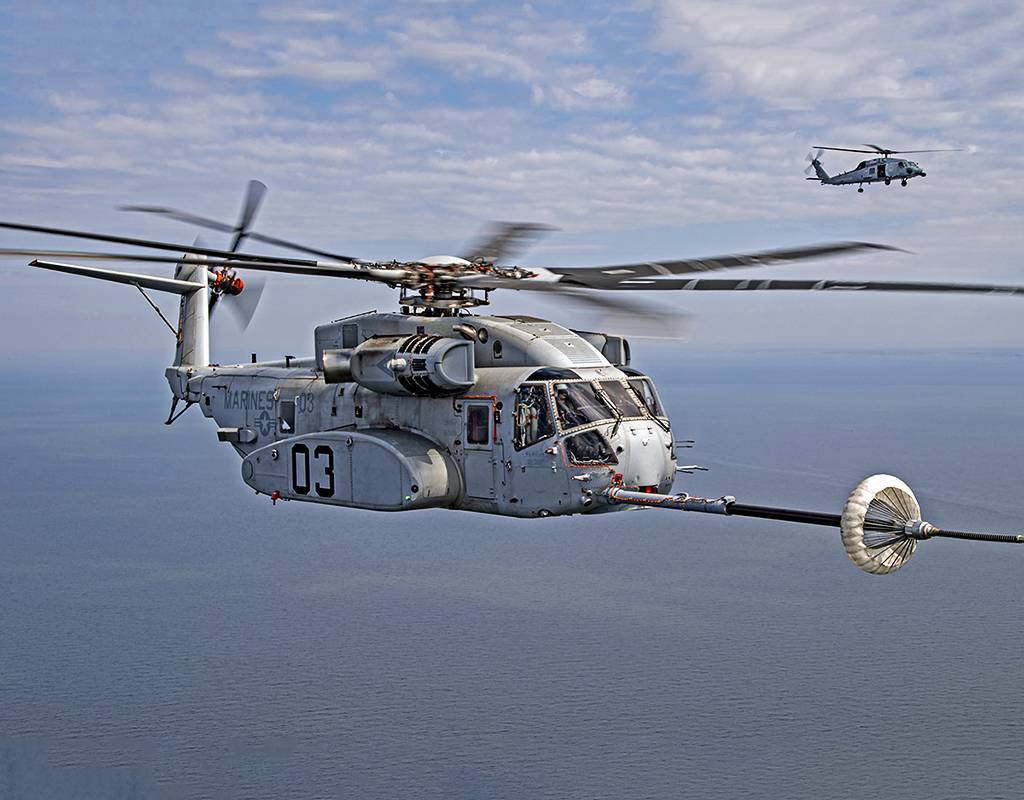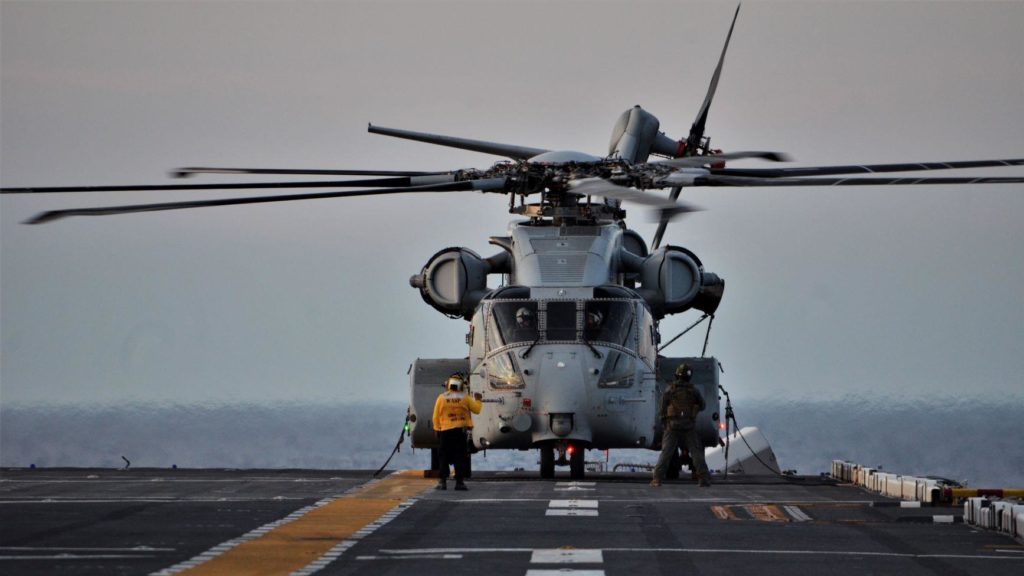
With just weeks separating the U.S. Marine Corps from getting its hands on the first operational Sikorsky CH-53K King Stallion, service aviation officials are speaking of the once-troubled aircraft’s progress with mild elation.
“I would say the 53K is in as good a spot as it’s been in for a long way,” Deputy Commandant for Aviation Lt. Gen. Mark Wise said this week at the Vertical Flight Society’s 76th Annual Forum, held online in 2020 because of the ongoing Covid-19 pandemic.
“Of course, the team at Sikorsky has been doing a wonderful job in making sure how we’ve been developing the test points,” Wise added. “If you look at what it did on the [USS] Wasp and how it’s been advancing through its test points, it’s actually been meeting or exceeding in all cases. It’s hard not to be happy with that. . . . “I’ve been out to see it tested . . . and am very, very happy with what I’m seeing.”
The 53K, which will be the largest helicopter in the U.S. military inventory when it enters service, was delayed for two years because of dozens of developmental deficiencies — including most recently a problem with the engines re-ingesitng hot exhaust, which dampened their lifting power. That problem was solved by manufacturer Sikorsky in December and the King Stallion has gone on to a banner 2020, according to Maj. Gen. Gregory Masiello, the Marine Corps’ aviation program executive officer.
A 53K performed the first aerial refueling from a KC-130J in April and went on to validate various gassing-up procedures using its fly-by-wire stability controls and while carrying a 27,000-pound external load.
In August and September, the aircraft completed hot weather and degraded visual environment testing in Yuma, Arizona.
“The feedback I had from the pilots as far as the stability and flight controls are that this aircraft is unlike any other one that we’ve had,” Masiello said at the VFS Forum. “It’s amazing. It’s digital. I have heard no complaints from the flight control system on the aircraft at all.”
During two weeks aboard the USS Wasp, a flat-top amphibious assault ship, the helicopter performed 364 ship landings and takeoffs from all deck spots, expanding the wind envelope, performing multiple towing and hangar evolutions, and conducting multiple rotor blade spread, fold, engagement and disengagement operations.
“We also went to the sea trials, the first time this thing went to a boat,” Masiello added. “It went to the Wasp, performed very well,” Masiello said. “This thing can fold up; it’s a marinized helicopter. It’s actually a smaller footprint than its predecessor aircraft and triples the lift. If there is one thing that I could change if I could go backwards on this program . . . I probably wouldn’t be calling this a 53, because of the advancements and changes. There is obviously some similarities in the look, but aside from that this is a completely different . . . and absolute advancement in aviation for us and essential.”

So far, the test campaign has racked up 3,500 hours, according to Sikorsky 53K chief test pilot Steve McCulley. Four operational aircraft are in various stages of production at Sikorsky’s facility in Stratford, Connecticut.
The Marine Corps plans to buy 200 aircraft. Plans are to award the fourth production contract for 20 aircraft in October, Masiello said. Funding is already available to procure another seven after that, he said.
“That’s 27 aircraft that we are committed to on this program of record, so we are well on the way . . . as well as in our test,” Masiello said. “The industry and government team, engineering came together and the computational power that was brought in to address a three-engine helicopter was actually very good unity of effort and alignment between us and industry. We’ve got the aircraft up and tracking to plan today.”
The first aircraft delivered to the Marine Corps in 2018 is now undergoing a logistics demonstration tear-down to provide feedback to program officials on maintenance routines and processes, Masiello said. That aircraft will be put back together and enter initial operational test and evaluation with Marine Operational Test and Evaluation Squadron One at Marine Corps Air Station New River in North Carolina later this year, Masiello said.
“We’ve learned some things that you wouldn’t learn until your first or second deployment when we unveil systems on this,” Masiello said. “That aircraft is now going through the latest mods and we’ll turn it back over to the fleet shortly this fall and that will be the first operational aircraft in the hands of the Marine Corps.”
The 53K’s maiden deployment is scheduled for late 2023 or early the following year. In the meantime, the Marine Corps is updating a portion of its fleet of 142 CH-53Es to keep them relevant until their replacement aircraft comes online in sufficient numbers. The entire fleet is being reset at a depot level and rebuilt to modern standards, Masiello said. Those aircraft are also being re-engined with new General Electric T64 powerplants following a restart of that production line, Masiello said.
Wise said those efforts to update the 53 Echo are bearing fruit as the Marines await entry to service of the new 53K.
“As you look at bringing on new capabilities, 53K in this particular case, you also have got to make sure you’re viable in the sundowning platform that is being replaced, in this case the 53 Echo,” he said. “What we’ve done with the reset program is actually showing great returns on that investment to make sure it’s viable up through 53K as we bring that online.”




